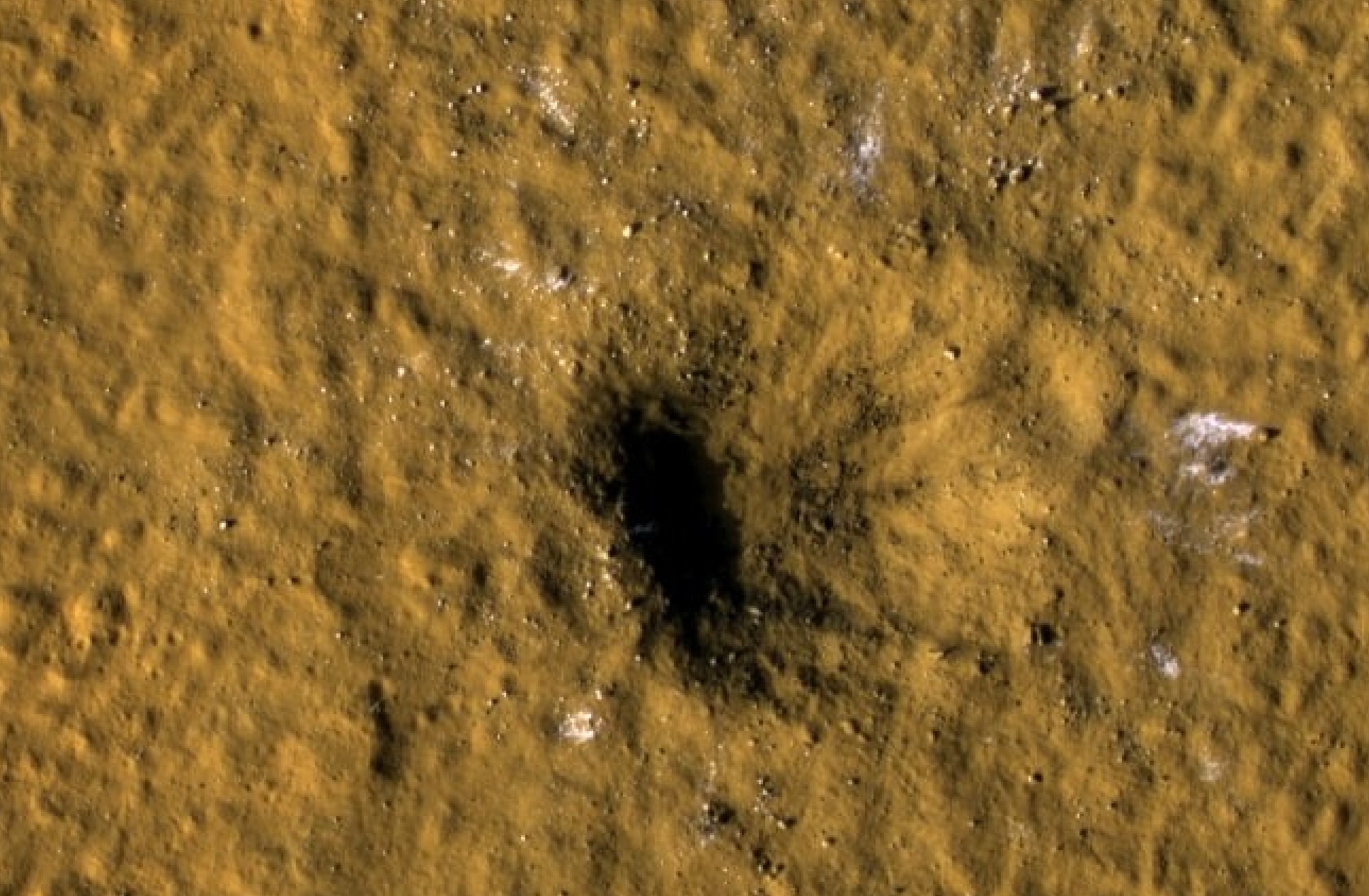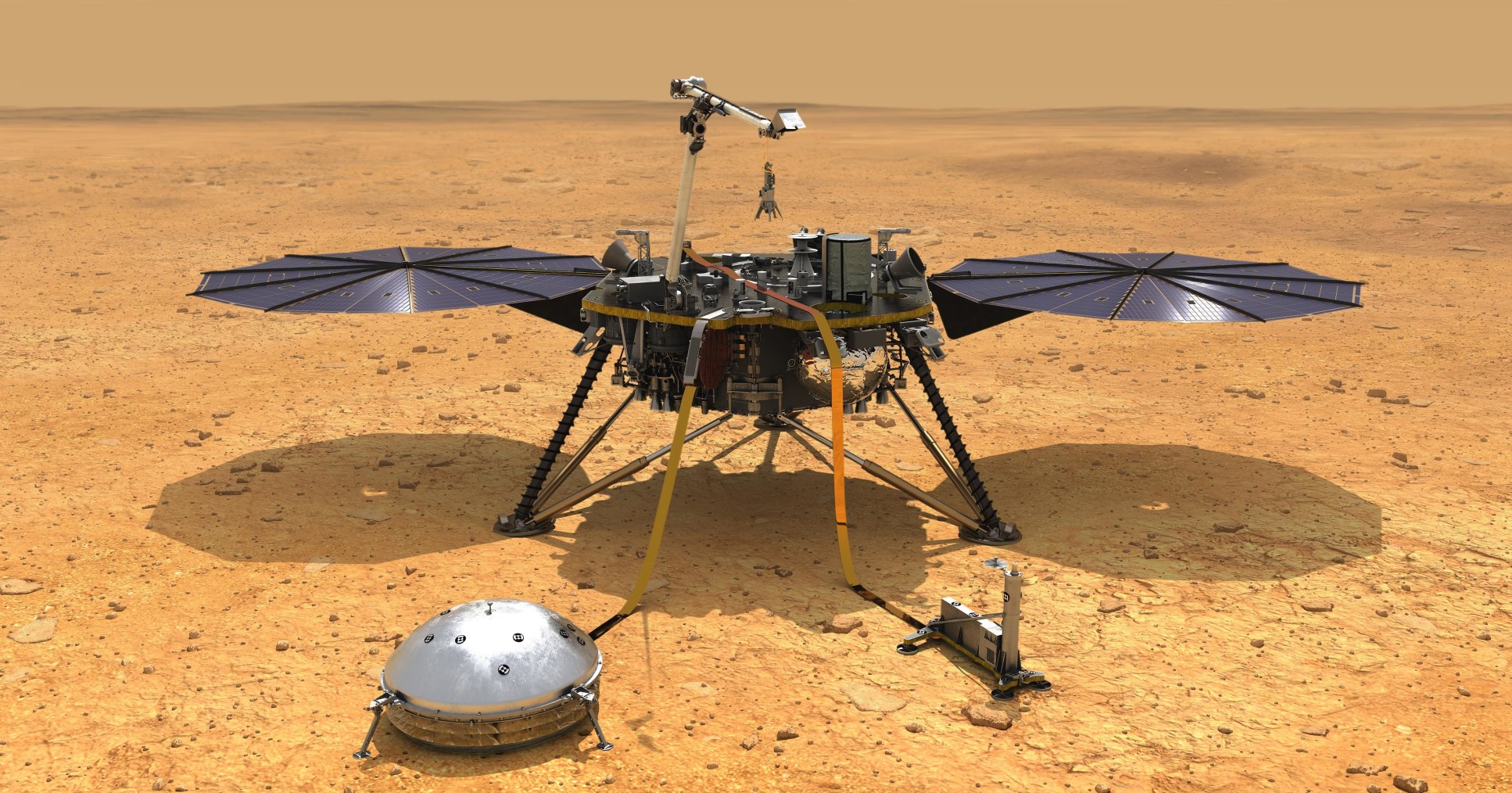NASA and Imperial scientists detect epic meteoroid impact on Mars
NASA instruments co-developed at Imperial have detected a Mars meteoroid impact that left a crater one and a half times the size of Trafalgar Square.
It is the largest crater-forming impact ever observed in the solar system. The van-sized space rock weighed 200 tonnes and produced a blast zone around the crater equivalent in size to the area inside London’s M25 motorway.
As well as finding marsquakes, our seismometer has now detected one of the largest crater-forming impacts observed in the solar system Professor Tom Pike Department of Electrical and Electronic Engineering
Imperial College London-developed quake detectors onboard NASA’s Mars InSight lander felt the ground shake during the impact on Christmas Eve 2021, while cameras aboard the Mars Reconnaissance Orbiter spotted the massive new crater from space. Two papers published in Science document the findings.
Professor Tom Pike, from Imperial’s Department of Electrical and Electronic Engineering, is part of the team that developed silicon sensors for the Mars InSight’s seismometer - an instrument that detects ground noises and shaking such as those caused by quakes and impacts. It first detected marsquakes shortly after it landed in 2018. He said: “As well as finding marsquakes, our seismometer has now detected one of the largest crater-forming impacts observed in the solar system.”
We are incredibly fortunate to have seen - and heard - this spectacular impact Professor Gareth Collins Department of Earth Science and Engineering
When the meteoroid struck, in a region called Amazonis Planitia, it released the energy equivalent to several kilotonnes of TNT, excavating a crater roughly 492 feet (150 metres) across and 70 feet (21 metres) deep and producing a strong blast wave in the atmosphere.
With images from the Orbiter and seismic data from InSight documenting the event, this is the first time scientists have witnessed a crater of this size forming anywhere in the solar system. Many larger craters exist on the planet but are significantly older and predate any Mars mission.

Professor Gareth Collins, from Imperial’s Department of Earth Science and Engineering, is part of the team that interpreted the images of the impact crater and modelled the air blast and ground shaking produced by the meteoroid’s violent collision with the ground. He said: “We are incredibly fortunate to have seen - and heard - this spectacular impact during InSight’s operations on Mars.”
Orbital images and seismic signals have revealed so much about Mars and the impact process…which is important for understanding the hazard of larger impacts on Earth. Natalia Wojcicka Department of Earth Science and Engineering
Natalia Wojcicka, PhD candidate at the same department, also conducted modelling work to support interpretation of the seismic signals. She said: “These orbital images and seismic signals have revealed so much about Mars and the impact process, including how to recognise other impact signals and just how effective impacts are at shaking the ground, which is important for understanding the hazard of larger impacts on Earth.”
After studying the seismic signal of the massive impact, the researchers recognised the signal of a second, slightly smaller impact in InSight’s seismic data before verifying this by orbital imaging. The second impact, also detailed in the papers, occurred in September 2021.
Rocky structures
The seismic waves from the impact events offer other insights. As they pass through or reflect off material in Mars’ crust, mantle, and core, they change in ways that seismologists can study to determine the depth and composition of these layers. The larger the crater, the further away the seismic waves are detectable and the deeper they probe into Mars’ interior.
We had dreamt about detecting such an event when we first planned the mission Dr Constantinos Charalambous Department of Electrical and Electronic Engineering
What scientists learn about the structure of Mars can help them better understand the formation of all rocky worlds, including Earth and its Moon.
Dr Constantinos Charalambous, working with Professor Pike at the Department of Electrical and Electronic Engineering, has been teasing out the seismic signals from the data. He said: “Once we looked more closely, we saw hints of surface waves – ripples that rather than passing straight through the planet, travel around the crust of Mars. The very day we positively identified surface waves on one of our largest quakes from September, we got the orbiter images telling us it was a huge impact.
"We had dreamt about detecting such an event when we first planned the mission – an impact with a precise location together with surface waves that could be seen looping around the whole planet. The mission was already into extra time, with the lander’s power falling away, so this was the late goal we wanted to achieve. We are now studying these waves to map the structure of Mars’ crust.”

Astronaut resource
Since landing in November 2018, InSight has detected 1,318 marsquakes, including several caused by much smaller meteoroid impacts.
Imperial co-led the UK’s input alongside the University of Oxford and the UK Space Agency.
We are pleased to contribute to the InSight programme with Imperial College London and Oxford University, and look forward to seeing what this knew information will lead to. Libby Jackson Head of Space Exploration, UK Space Agency
A dark halo of material surrounding the crater churned up by the airblast measures at least 23 miles (37 kilometres) across. The impact also blasted chunks of buried water ice out of the crater – a discovery that could be a vital resource for future astronauts. Buried water ice has never been spotted this close to the equator, the warmest part of Mars.
Libby Jackson, Head of Space Exploration at UK Space Agency, said: “It’s fascinating to see the data returned from InSight’s UK-built seismometer, giving us a clearer picture of Mars’s structure and, in turn, bringing us a step closer to understanding how the planets of our solar system were formed.
“By observing craters left by seismic impact, experts identified water ice closer to the Martian equator than we have ever seen before, which will transform the way scientists around the world look at the Red Planet and could provide crucial resources for astronauts in the future.
“As the global space community increases its focus on Mars exploration, we are pleased to contribute to the InSight programme with Imperial College London and Oxford University, and look forward to seeing what this knew information will lead to.”
NASA’s Jet Propulsion Laboratory (JPL) manages InSight and the Mars Reconnaissance Orbiter for NASA's Science Mission Directorate, which includes input from multiple universities and companies internationally, including Imperial and the UK Space Agency.
The news story is adapted from a press release by NASA JPL.
Article supporters
Article text (excluding photos or graphics) © Imperial College London.
Photos and graphics subject to third party copyright used with permission or © Imperial College London.
Reporter
Caroline Brogan
Communications Division